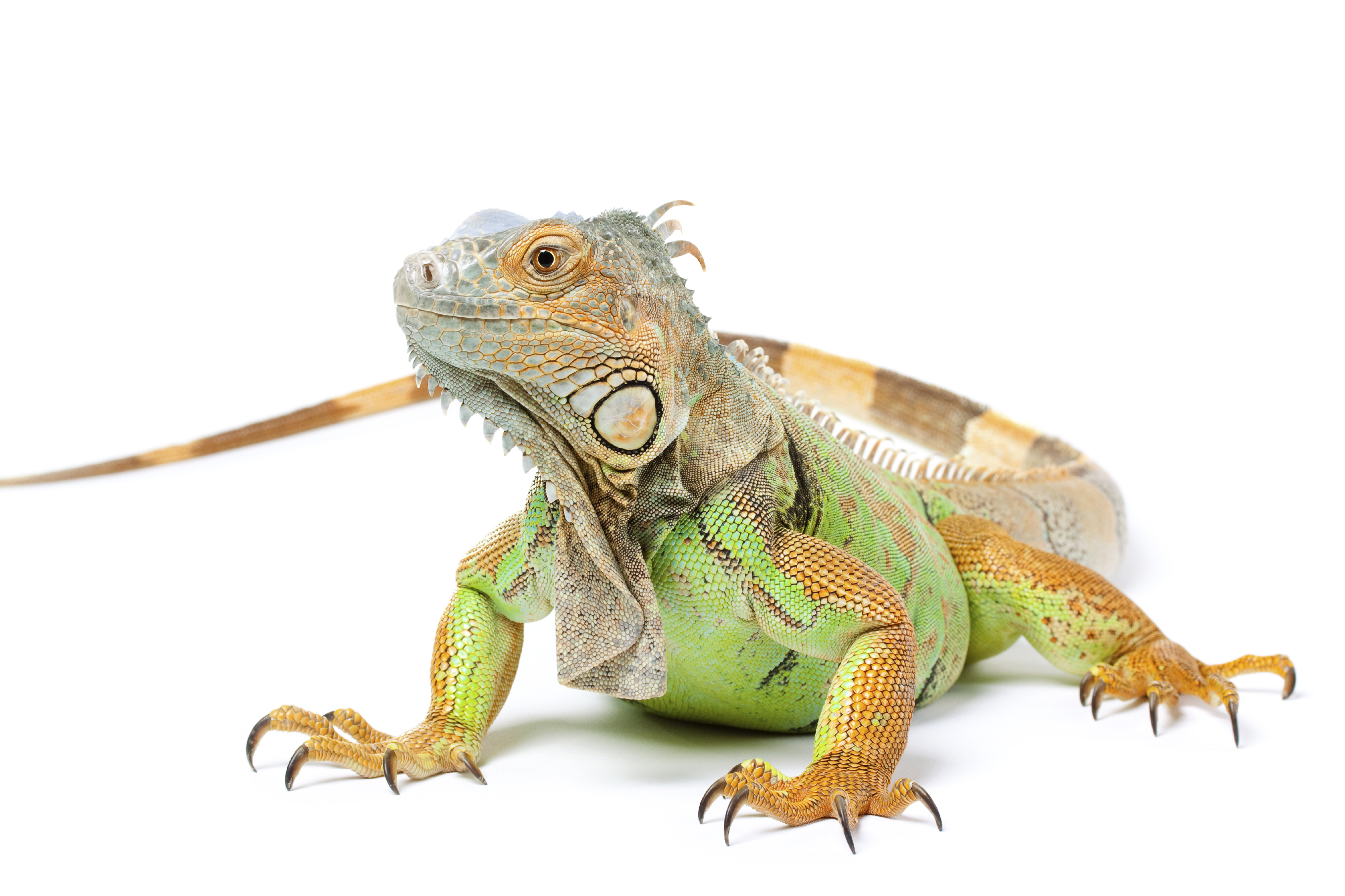
|
Printable Version: |
Coming Soon |
|
Video Tutorial: |
Coming Soon |
Iguana Habitat Setup and Care |
Quick Facts● The scientific name for an Iguana is Iguana iguana. ● They originate from central and South America. ● With proper care and diet, the average lifespan of an Igiana is ~20 years. ● Iguanas are herbivores, unlike some reptiles which are omnivores/insectivores, and require a little more planning for their diet. You can find a full diet plan at this website: Green Ig Society ● Iguanas can grow as large as 6', but 5' is much more common. Plan ahead with your tank size! |
EnclosureIguanas can get very large, and at their largest need a 75-gallon tank. You can get a smaller tank and continue to upgrade the size as they grow, but you may be better off starting with a 75-gallon tank. Iguanas are commonly kept in glass terrariums or tanks, while some owners set their pets up in a cage made from melamine, PVC, or ABS plastic. Be sure to cover your enclosure with a screened lid to prevent your pet from escaping (they can be very skilled escape artists). Avoid glass, plastic, or any other type of solid lid that restricts air flow. |
SubstrateUse a good substrate to make your Iguana feel more at home. Reptile carpet, newspaper, or porcelain/ceramic tiles are the best options for baby and juvenile Iguanas and are easiest to maintain. Avoid using small loose particle substrates, such as calcium-based sand, ground walnut shells, or playground sand with babies and juveniles. These substrates can lead to impaction. Natural sand is okay for adult Iguanas. We recommend Fluker's Repta-Liner because it is easy to clean and maintain. |
AccessoriesIn addition to a basking perch, you can add other accessories to make your Iguana feel at home like branches, rocks, or driftwood. Rock dens or “hides” provide shade and give your lizard a place to escape to. They can double as a basking perch if strategically placed. An appropriate size branch should be included in every iguana's cage. A Repta-Bowl or Corner Bowl of appropriate size should be included in every iguana's cage for both food and water. All bowls should regularly be disinfected. |
Temperature & LightingThe Repta-Sun 5.0 UVB Fluorescent Light Bulb imitates the natural light of the sun making it possible for the iguana to produce vitamin D naturally. The iguana needs vitamin D to aid in calcium digestion. Bone disorders are one of the common killers of captive iguanas. A fluorescent Hood Includes extra outlets to allow the customer to plug in other accessories, i.e. Clamp Lamp, Under Tank Heater, etc. Combination Hood may be used for younger iguanas in a smaller tank when using lower wattage bulbs. Keep your iguanas warm at night with minimal light so it does not disturb its night cycle. It is not healthy to leave daytime lights on at night. A 12-hour day and night cycle is needed for psychological benefits. A Heat Mat produces heat from the bottom of the terrarium. Its function is to help aid in the digestion of food. Hot Rocks may be used for older iguanas, but should not be used for juveniles because their skin is too sensitive for direct heat. |
Diet & NutritionIguanas also require more responsibility since they are herbivores, meaning they only eat veggies, and you have to monitor what they eat much more carefully than other reptiles. Fluker's doesn't carry an iguana-specific diet, but our Tortoise Diet is suitable for your pet iguana. Comes in Large Pellet and Small Pellet. Fluker's recommends sprinkling Reptile Vitamin and Calcium:Phosphorus on animal's food once a week. (Not daily as some vitamins may be toxic if used in excess). This is a high protein supplement that promotes fast, healthy growth in iguanas. |
Handling & SafetyWhile easy to handle and docile in the first few days of handling, iguanas can quickly become more aggressive. When stressed or aggravated, iguanas can lash out in many ways, so keeping a healthy and happy iguana is necessary. Iguanas can be difficult to manage because of their size. An average iguana can get up to 5' and even 6' long. They also can be more aggressive than most reptiles and require much more taming. Every iguana is different. If you are planning to keep multiple enclosures, be prepared to separate them in the event the iguanas begin to act too aggressive to one another. Contact a vet if you notice any of these symptoms of illness or distress such as: weight loss or decreased appetite, swelling, discharge from mouth or nose, lethargy, labored breathing, paralysis of limbs, or abnormal feces. |
